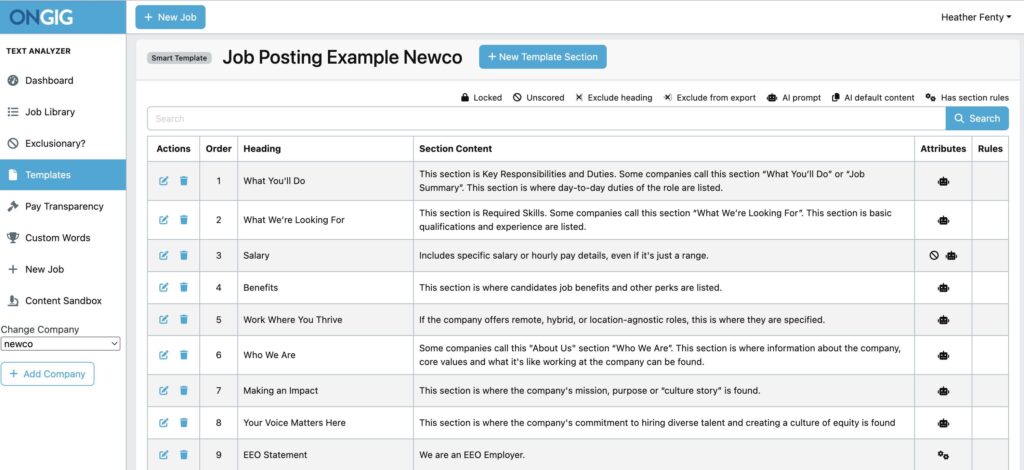- 16 Helpful Career Site Self-Service Tools for You - December 18, 2025
- Last Week I Had a Viral LinkedIn Post — But Why? (And What TA Folks Can Learn From It) - December 8, 2025
- Job Description Process Improvement: How One Workflow Fix Saved 1,200 JDs from Chaos - December 4, 2025
I’ve heard people say job description templates are just a “nice-to-have.” Kind of like branded mugs or office plants. They look good, but they don’t really do much. I disagree.
Turns out, templates are the quiet hero of recruiting efficiency. They cut time, boost quality, and—most importantly—they save your team from drowning in job description chaos.
Templates for job descriptions fix problems before you even notice them
We recently worked with a major employer (let’s just say they hire a lot of people). When they started with us, about 20% of their job descriptions had unmatched content. Stuff that didn’t belong, wasn’t compliant, or just looked messy. These issues weren’t just cosmetic; they were legal and brand risks.
Templates solved that. With one click, every job description snapped into place. Outdated phrasing? Gone. Random formatting? Fixed. Missing content? Filled. No more manual audits or guessing games.
Templates for job descriptions help with compliance and clarity
Templates bring consistency across every job. That means recruiters, hiring managers, and candidates all get on the same page, literally. One customer jumped their job quality scores from the 70s to over 90, just by using templated formatting and AI-powered scoring.
It didn’t take months. It didn’t take a dedicated copywriting team. It just took a clear structure, enforced with tech.
Templates reduce editing time (by a lot!)

If you’ve ever tried to clean up thousands of job descriptions, you know how long it takes. Reviewing for compliance, formatting, readability…it’s a beast. One customer told us it would’ve taken months to fix everything manually. With Ongig’s templating, they did it in a fraction of the time.
We’re not talking about a “nice-to-have” tweak. We’re talking about eliminating hours of work per job description. Multiply that by 4,000+ jobs, and yeah—it’s a game changer.
Better templates = better candidate experience
Before templating, job descriptions were all over the place. Some had outdated benefits sections. Others missed key info like success factors or essential functions. Candidates noticed, and not in a good way.
With templating, everything’s aligned. Candidates get a clear, consistent experience across every job. That’s how you build trust before they even apply.
And don’t forget SEO
Most job descriptions weren’t written with SEO in mind. Weird headers, inconsistent formatting, and jargon-heavy content can tank your visibility. Templates fix that too. One customer saw better ranking, better engagement, and faster time-to-fill just by standardizing the structure of their JDs.
Final thought: Templating isn’t sexy. But it works.
It’s easy to chase shiny recruiting tools. But sometimes the most powerful solution is the one hiding in plain sight. If your team is tired of job description drama—start with templates.
Why I Wrote This
We work with TA leaders every day who are buried in job description cleanup projects. Templating is often the simplest way to start untangling the mess and Ongig’s software makes it easy. Want to see how it works? Request a demo and see what templating can do for your team.
FAQs
- What’s the ROI of job description templates?
Less editing time, more consistent branding, higher job apply rates, and fewer compliance issues. Templates pay for themselves fast. - Can templates help with DEI?
Yes. Templates enforce inclusive language and structure, which helps reduce bias across the board. - Do templates replace recruiters?
Not at all. They just give recruiters a solid foundation to start from—so they can spend more time attracting great candidates, not cleaning up formatting. - Is templating hard to implement?
With the right tech (like Ongig), it’s fast and painless. You can roll out new templates across thousands of JDs in days, not weeks.
